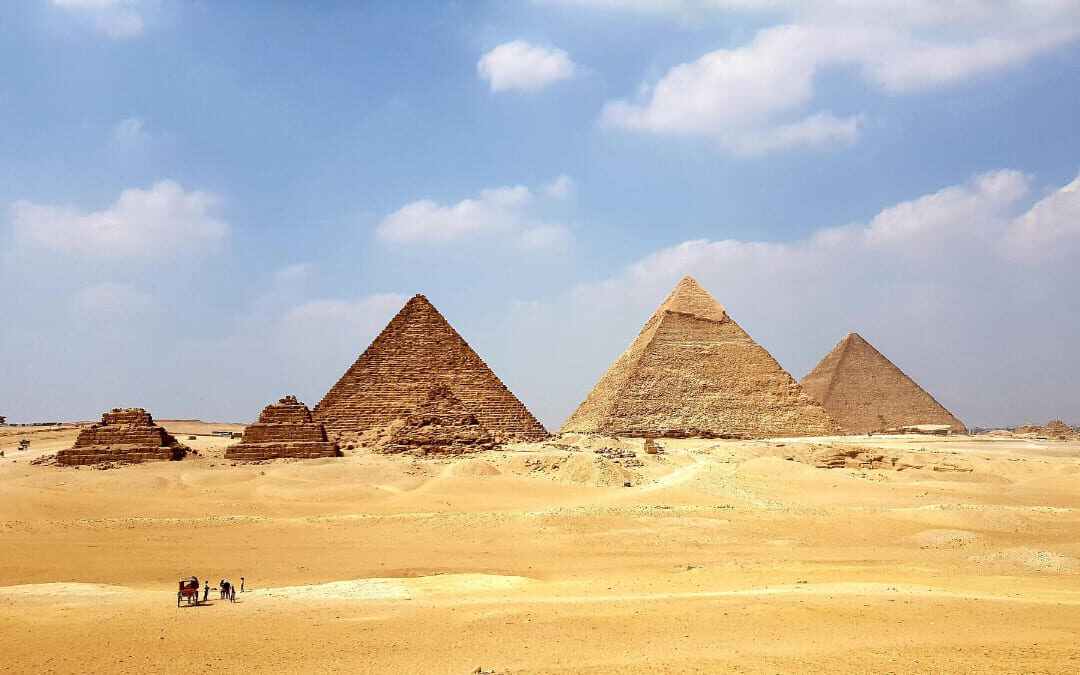Back in November 2000, I embarked on a budget-friendly, no-frills backpacking adventure to Egypt with a budget of just $200.
I had spent three months working as a volunteer in an Israeli kibbutz, where I met many international travelers. After hearing countless stories of how great Egypt was, I decided to visit with an Englishwoman, an Indian, and a Swede. We took a bus to Eilat, crossed the border into Taba on foot, and found ourselves in Sinai. Unfortunately, we lost the Indian along the way because he needed a visa for Sinai. So, the three of us continued on.
At that time, with my Estonian passport, I needed a visa for Israel but not for Egypt. It wasn’t until we had crossed the border that I realized my Israeli visa was for a single entry, and I wouldn’t be able to return for my flight to Tallinn. This added a new goal to the trip – obtaining an Israeli visa from the Israeli embassy in Cairo, which sounded amusing now but was quite stressful then. Only I needed this visa, as the Swede and the Englishwoman had visa-free entry to Israel.
Another important point: that fall marked the beginning of one of the most serious conflicts between Israel and Egypt in recent history. Many people in Israel, including friends, urged me not to go. However, I hadn’t seen any signs of war in the kibbutz or Israel, so I took the risk. The conflict was more visible in the territories and nearby areas, but I believed in taking risks for rewarding experiences.
With limited internet access back then, we relied on the Lonely Planet guidebook for information about buses and other details. From Taba, we took a bus (the only decent one I saw in Egypt) to the village of Dahab, a small touristy village for backpackers, not the town of Dahab. There were no hotels, only hostels and other cheap accommodations. But we had the Red Sea, warm sunny weather, and the beautiful Sinai mountains and desert. We stayed a couple of days, snorkeled, and then continued our journey. We hopped on a minibus to Cairo with Arabs and other adventurous tourists.
The minibus route took us through the Sinai Peninsula, the Suez Canal, Alexandria, and finally Cairo, a 10-12 hour journey in a battered minibus. Our backpacks were tied to the roof, and the driver sped through the mountainous roads, making me worry about our belongings. The surrounding mountainous desert was breathtaking yet intimidating, giving me the feeling that if something went wrong, we’d never be found. The official road was the only route through this vast desert.
Arriving in Cairo felt like entering a madhouse. The traffic was chaotic, with five lanes in each direction filled with buses, old and new cars, and donkey carts. Every vehicle was scratched or dented, and the only rule seemed to be that the boldest driver goes first. Crossing the street required closing your eyes and hoping for the best. The air was smoggy, everything looked grey, and the sun was barely visible. We stayed in a hostel with 12 people in a room, ate street food, mingled with locals, and had an amazing time. During our few days in Cairo, we visited the pyramids, the Cairo Museum, the Citadel, the Cairo market, and explored the city center thoroughly. The city was dirty, but its beauty, rich culture, and history were captivating.
The Pyramids of Giza were a must-see. We visited at sunset and rode camels around the area, which was an unforgettable experience. The poverty around Giza contrasted starkly with the wealthy tourists, making for an interesting, if sobering, sight. Egypt is so Egypt – there’s a fee to get on a camel and a tip to get off 🙂 Near the pyramids, the city of Giza shows extreme poverty right next to crowds of wealthy tourists. It doesn’t look great, but it’s interesting nonetheless.
The embassy adventure was a story in itself, one I’ll spare the details of for my mother’s sake. The embassy adventure was a story in itself, one I’ll spare the details of for my mother’s sake – she will panic just by reading it :). Suffice it to say, it was a nerve-wracking experience. Honestly, I’m not a coward, but there were moments when I was scared I might get stuck there. Getting a visa to Israel from Egypt during a diplomatic crisis was far from guaranteed. It has ended well, though and we bought tickets for a train to Luxor. We traveled in third class with locals, which was an experience reminiscent of a sleeper car at night. Despite the conditions, it wasn’t particularly extreme or dirty. Despite the conditions, it wasn’t particularly extreme or dirty.
Luxor and Karnak were even more impressive than Cairo. Like stepping into another world. We have rented bikes to visit the Valley of the Kings. A fun and unforgettable journey through the desert with temperatures around 40°C. My friends continued to Aswan, but with my $200 nearly spent, I decided to head back to Israel alone. Same route. I won’t go into the details, but crossing the border back into Eilat felt like coming home. The entire trip lasted just 10 days, but even after 18 years and many other travels, it remains one of my most memorable and daring adventures.
Looking back, I can’t believe I took such risks, especially as a young 20-year-old blonde traveling alone. But I still maintain that Sinai is not the same as Egypt, and Sharm El Sheikh even less so. Those $300 one-day excursions to Cairo and Luxor from Sinai are exhausting and uninformative. Don’t take them; you’ll be too tired to enjoy anything. I’ve since returned to Sinai as a more “cultured” traveler staying in 5-star all-inclusive resorts, primarily for diving. I still plan to dive there again and perhaps someday visit Hurghada and travel to Aswan with my family.

